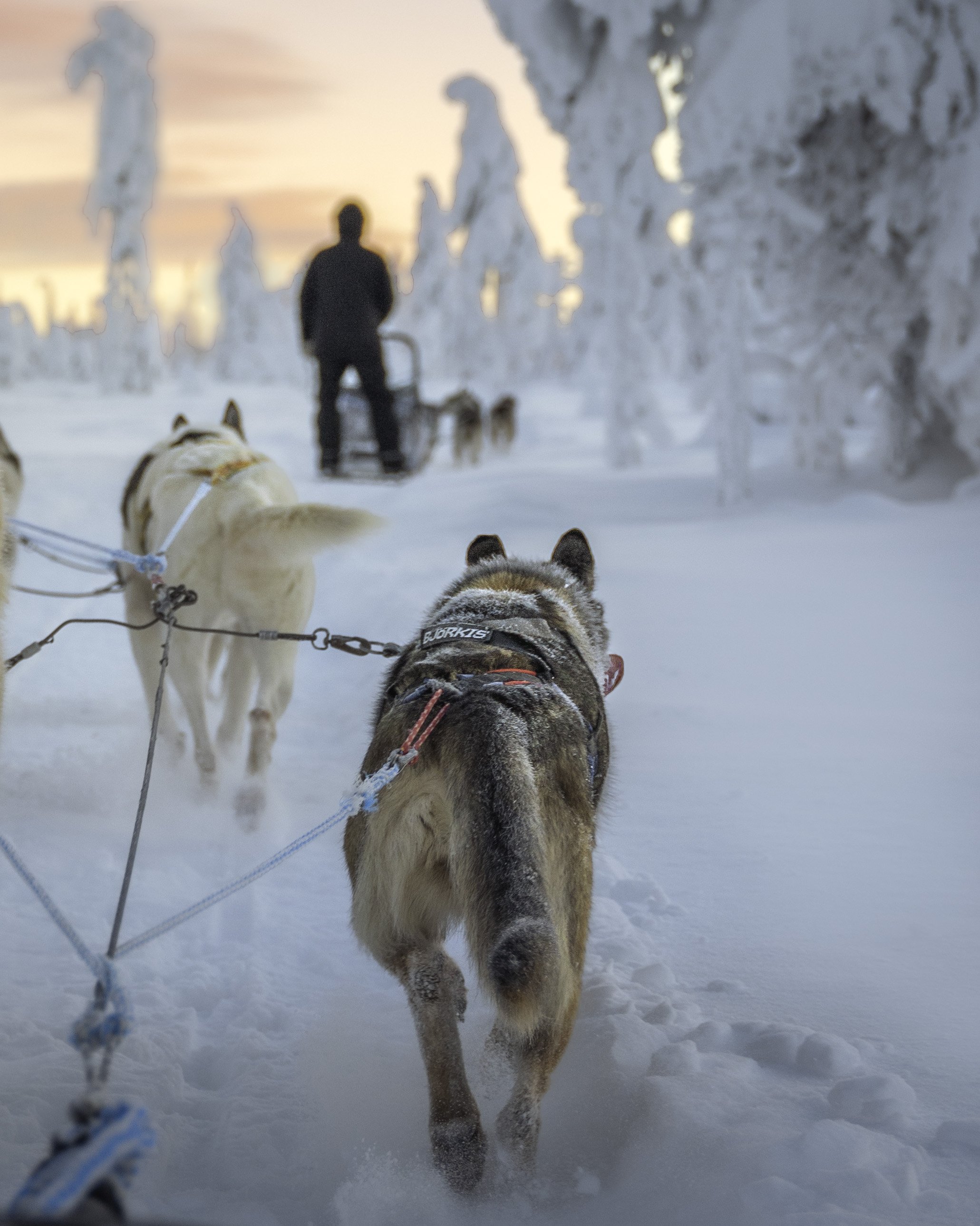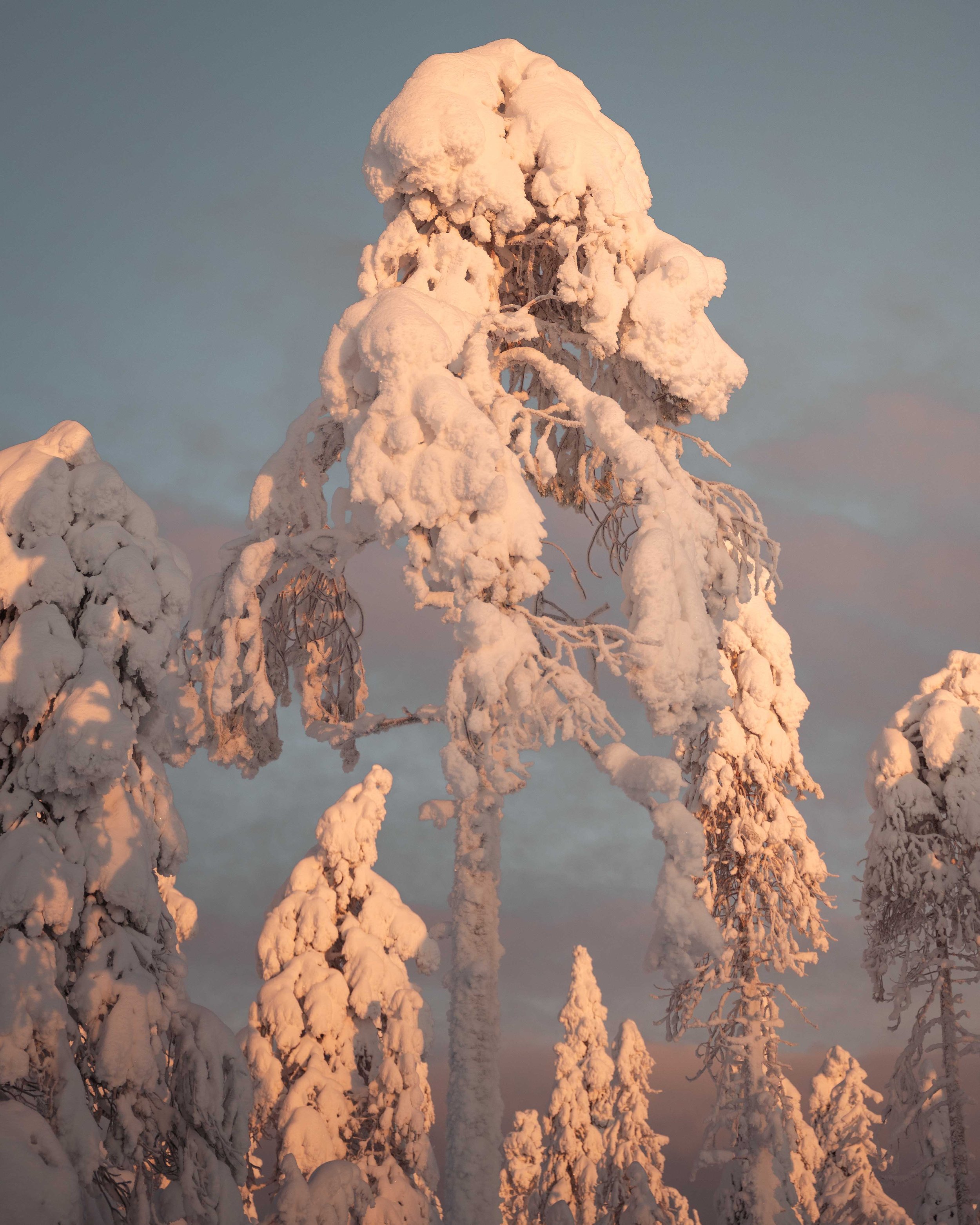Should you go on a husky sled ride?
It’s the beginning of winter, your Instagram feed is turning white, and you are being bombarded by pictures and videos of frozen lakes, snowed-under trees and mountains, and cosy cabins with roaring fires.
And then you come across a video of a team of fluffy and enthusiastic huskies pulling a sled across some pristine snowy wilderness, white trees passing by at full speed on both sides, and the golden glow of the low sun giving the whole scene a dreamy quality.
If that scene moves something deep inside of you, you’re not alone. I felt the same every time I came across one of those videos.
The scene evokes the stories of those people who used to depend on their dogs as a means of transportation in remote Arctic outposts. Their deep connection went beyond the cuddles on the sofa, it was a mutual reliance for survival.
Many of us dream of experiencing that deep connection with a creature we love.
However, with that dream should also come a few uncomfortable questions. We should all wonder if it’s ethically ok to enjoy a day out while these guys do all the hard work. Also, should they be outside for that long in such low temperatures? And how are they treated by their owners? Are they just considered workforce and, if so, what happens if their productivity decreases with age or illness?
In a nutshell – is going on a husky sled ride supporting a form of animal exploitation that harms our beloved four-legged friends?
When I planned my winter Lapland trip, I spent a lot of time researching these topics because I would have been perfectly happy avoiding a husky safari if I had felt that animal welfare wasn’t considered enough of a priority.
I found answers to most of my questions, and I am happy to share them here so you can make your mind up on whether this activity is for you.
By supporting dog sledding are we helping the preservation of a Finnish tradition?
I want to address this aspect first because some visitors may feel they are having a cultural experience and supporting local customs by going on a dog sledding adventure. How amazing would it feel to relive what the Samis and other Finnish people did to move around in Lapland for centuries?
Well, that never happened. There is no recording of dog sledding as a traditional way of life in Finland and it has never featured among Sami customs.
Dog sledding exists in Finland purely because of us, the visitors, and has developed extensively only in the last 30 years. Like it or not, a husky safari is a touristy thing.
Is using dogs to pull sleds in the snow a form of abuse?
If the dogs performing this activity are huskies, then the answer is no. In fact, huskies were bred to do exactly that: haul cargos in the snow. Ok, for some of us, engineering a creature just to serve a human purpose is an unethical form of interference with nature, but that’s a philosophical debate to have another time. For the purpose of this post, let’s just be grateful we were born in a world with huskies.
Simply because of their genes, huskies are happier pulling a sled in the snow than lazing around inside a cosy house. You will see them getting frustrated when they are all harnessed and ready to go and you are still trying to make yourself comfortable in the sled. They will be howling in excitement (and frustration, again) until the brakes are lifted and they are free to run. Then, they will be merrily and quietly galloping on a snowy path in the middle of a winter wonderland.
Do husky tourism companies treat their canine ‘workforce’ ethically?
This is the single most crucial question when evaluating whether or not to go on a husky safari.
And unfortunately, based on what I have read, the answer is not a straight ‘yes’ but a lukewarm ‘it depends’. Some husky farms (as dog sledding companies are called) look after their dogs, some not so much.
Upon a visit, most establishments will look like cheerful places with all the photogenic dogs eager to go for a run and the guides being all smiles, but it’s what happens when the tourists are not around that matters the most.
The main issues these companies need to get right are:
Providing good living conditions for huskies. This means safety, high quality kennels, a healthy diet, veterinary medical care, and a good work/rest balance. It goes without saying that the larger their dog population is, the higher are the investments they need to make in facilities and the operational costs they need to meet. They will also need more staff to look after the dogs and keep them entertained: even when they’re not pulling sleds, these are very active dogs that need a daily dose of solid exercise.
Addressing the aging of their huskies. It’s all well and good when the dogs are in their best years and are keen and happy to work, but what happens when they approach 8-10 years of age and need to slow down? Some farms may see the cost of their maintenance hard to justify and, sadly, the Finnish legislation doesn’t protect dogs from being put down at the owner’s discretion. Tragically, only a few of the many husky safari companies in Finland have officially adopted a ‘no-cull policy'. These companies will have an adoption scheme in place for dogs ready for retirement, or may accept to keep their older friends as pets.
Addressing the seasonality of the business. Husky safaris usually start in December and are run as long as there is enough snow on the ground, with April being typically the end of the season. How do husky farms survive for the rest of the year? The price of a safari should always be high enough to cover all-year operations, but well-established companies tend to also plan summer activities, such as walks with the dogs or tours of their kennels that include play time with the huskies. However, there are also companies that only exist seasonally, especially non-Finnish ones, and who knows what happens to the dogs when Spring arrives, and the farms shut down.
Now, we want to be responsible travellers, not selfish globetrotters that look the other way to avoid accountability, right?
The good news is that there ARE ethical husky safari companies in Finland that can allow us to enjoy the experience without harming the wonderful creatures that make it possible.
How to find them? Follow my Guide to an ethical husky safari!








